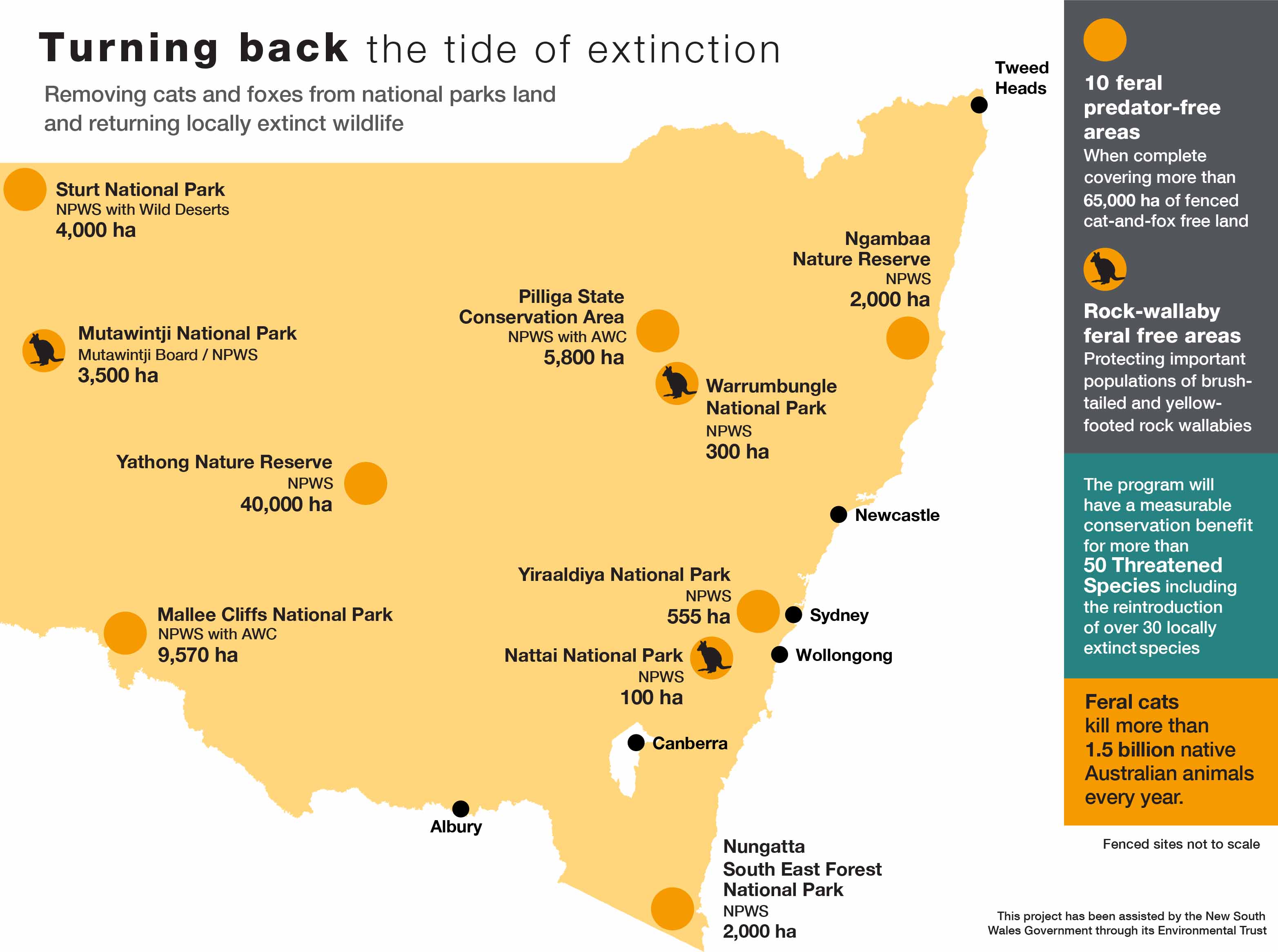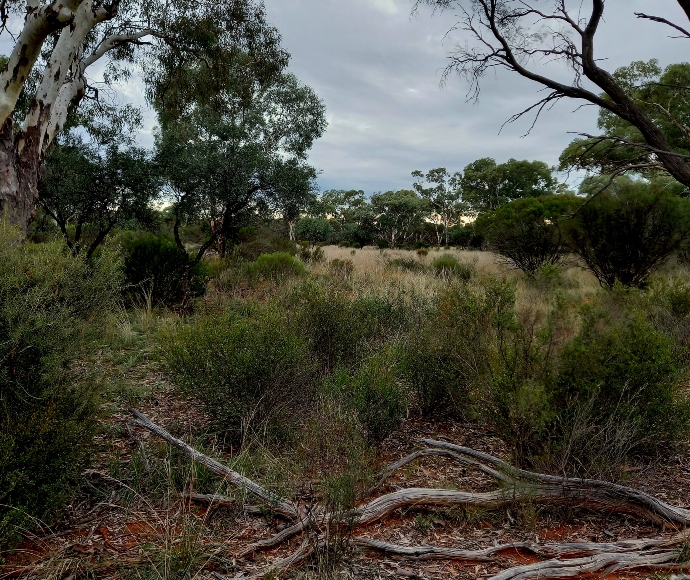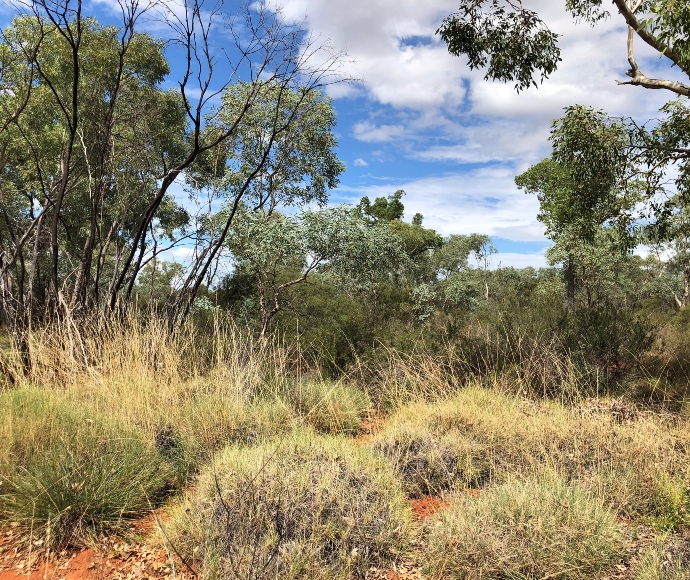The site within Yathong Nature Reserve will be up to 40,000 ha, one-third of the total size of the reserve (118,805 ha), making it the largest feral predator-free area established in New South Wales.
Acknowledgement of Country
We would like to acknowledge Ngemba, Ngiyampaa, Wangaaypuwan and Wayilwan native title claimants. We acknowledge the ongoing connection that Aboriginal people have to this land and recognise Aboriginal people as the original custodians.
How will the feral predator-free area be established?
At Yathong Nature Reserve, the establishment of the feral predator-free area will involve a staged approach. The first stage is the northern compartment (8,260 ha) and this will be the site for the first reintroduction of locally extinct species.
The same key steps are followed for establishing each of the 10 feral predator-free areas (see Ten feral predator-free areas for more information).
The key steps at Yathong Nature Reserve are:
- building a conservation fence, establishing a boundary and internal management trails
- eradicating all cats, foxes and wild dogs from within the conservation fence area
- eradicating populations of feral herbivores, including goats, pigs, rabbits and hares, wherever feasible
- reintroduction of locally extinct animal species (previously found within the central mallee)
- monitoring, evaluation and reporting on reintroduced species and ecosystem health.
Relevant planning approvals are in place for the construction and operation of conservation fencing and associated infrastructure, and planning is underway for the control of feral predators and herbivores in Yathong Nature Reserve.
Translocation plans and associated animal ethics approvals for the reintroduction of locally extinct species will be prepared separately.
How many animal species will be reintroduced?
The following locally extinct mammals are proposed for reintroduction:
- burrowing bettong
- brush-tailed bettong
- bridled nailtail wallaby
- western quoll
- greater bilby
- Mitchell's hopping mouse.
The suitability of each of these proposed species for reintroductions will be assessed individually during translocation proposal preparation and approval processes. The project will provide a conservation benefit for at least 18 threatened animals species, including:
- kultarr
- southern ningaui
- speckled warbler
- chestnut quail-thrush
- southern scrub-robin
- malleefowl
- Mukarrthippi grasswren
- red-lored whistler
- mallee bird community of the Murray Darling Depression Bioregion (endangered ecological community).
How did we select the species for reintroduction?
All species to be reintroduced are species that once lived in New South Wales, in this type of ecosystem and climate.
The species list is based on specimen records, sightings, distribution modelling, reports or other accounts, and knowledge of their habitat requirements and historic ranges.

Map showing the 10 feral predator-free rewilding sites across the NSW national parks estate
What are the next steps?
Updates on the Yathong feral predator-free area project will be published on this webpage as they occur.
Updates


